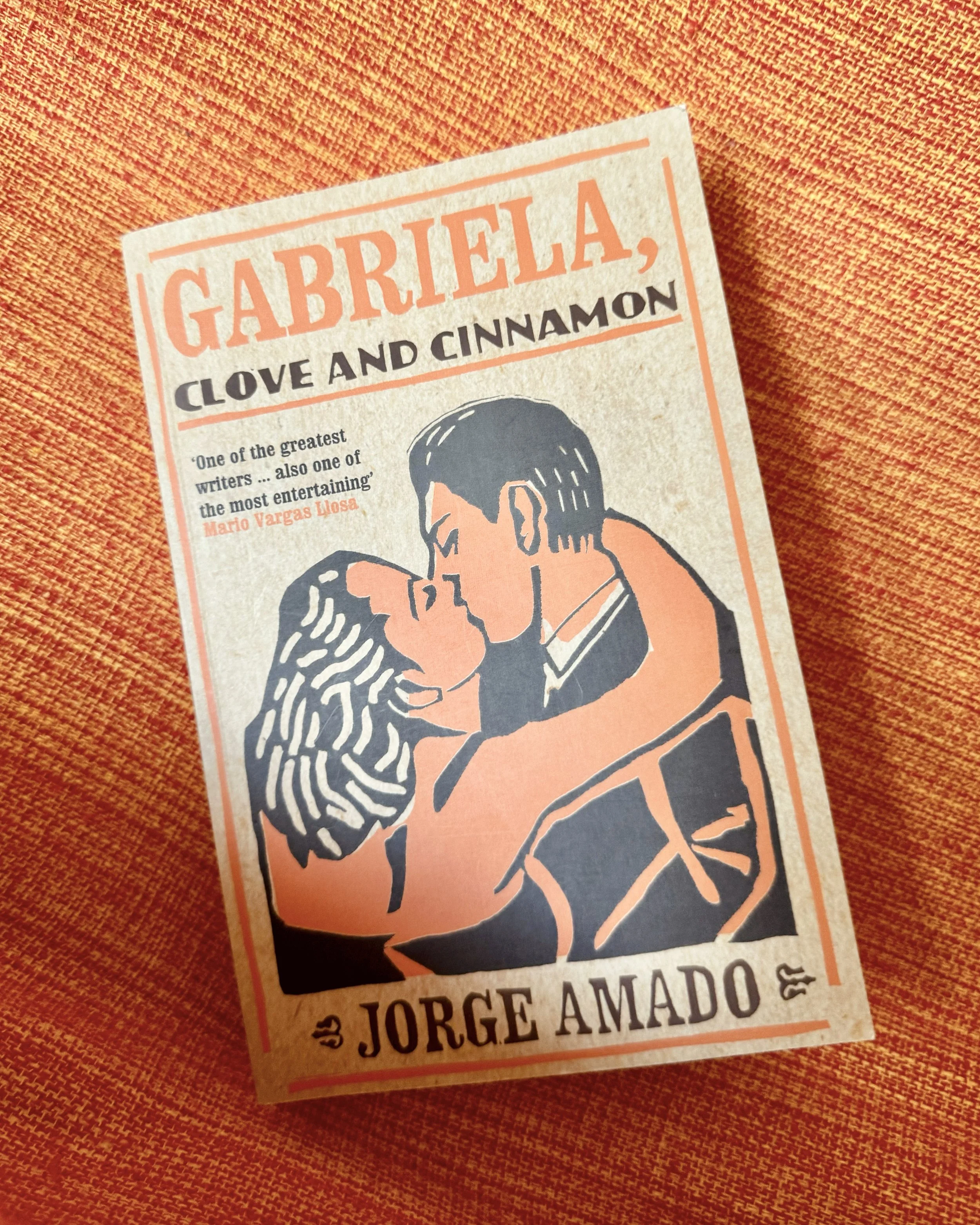Book Review: Gabriela, Clove and Cinnamon by Jorge Amado
Set in Ilhéus, a small town in Bahia, Brazil, in the 1920s, the novel unfolds against the backdrop of a community striving for progress.
I’d been wanting to read Jorge Amado ever since I visited his home-turned-museum in Salvador, Brazil, a few years ago. His colourful, eclectic residence hinted at the kind of novels I’d love - rich, vibrant, and deeply reflective of Brazil.
As one of the country’s most beloved authors, I had no doubt his writing would be incredible. But despite my best efforts, I couldn’t find an English translation of his books anywhere in Salvador.
So, on a more recent trip to Brazil, I was determined to track one down. I dragged my partner to every bookstore I could find - until finally, I spotted an English copy of Gabriela, Clove and Cinnamon, one of Amado’s most famous works.
It wasn’t a quick read, but it was completely worth it. Now I can see why Amado is considered a national treasure.
Book summary: A town in transition
Set in Ilhéus, a small town in Bahia in the 1920s, the novel unfolds against the backdrop of a community striving for “progress.”
Once a sleepy town, Ilhéus is booming thanks to cacao plantations. New roads, newspapers, and grand mansions signal development, but old attitudes - particularly around gender and power - remain deeply entrenched.
At its core, the novel is about this tension between tradition and change. Amado brilliantly captures the contradictions of a society eager to modernise, yet still clinging to outdated beliefs:
“New streets had been opened, automobiles brought in, mansions built, roads constructed, newspapers published, clubs organized—Ilhéus was transformed. But the ways men think and feel evolve more slowly.”
Gabriela: A symbol of freedom
Gabriela, the novel’s namesake, is the embodiment of simplicity and sensuality. She is carefree, connected to nature, and indifferent to social conventions. She enjoys life’s small pleasures - eating guavas in the sun, running barefoot on the beach.
But despite being the heart of the novel, we rarely get her perspective. She remains a somewhat passive character, defined more by how others see her than by her own thoughts or ambitions.
Her relationship with Nacib, a Syrian-Brazilian bar owner, is central to the novel. He adores her beauty and carefree spirit - but then tries to change her.
In his mind, turning Gabriela into a respectable wife is essential for his social standing. But she is who she is. She doesn’t understand why he wants to change her and refuses to conform.
Love, power, and social expectations
Beyond the love story, Gabriela, Clove and Cinnamon is a novel about masculinity, control, and the unspoken rules that govern a society.
It explores the pressures on men to assert dominance, the expectations placed on women, and the way violence - especially male violence - is tolerated, even celebrated.
Amado’s mastery of place and language
What I loved most about this book was Amado’s ability to capture Brazil on the page. His writing is vivid, filled with colour, humour, and sharp social observations.
The dialogue is ripe with authenticity, and the world he creates is immersive - so much so that you can almost smell the cacao plantations and feel the balmy heat of Ilhéus.
Final thoughts
Gabriela, Clove and Cinnamon is a novel of contrasts - love and control, tradition and progress, freedom and expectation. While Gabriela as a character remains somewhat elusive, the novel’s strength lies in its richly drawn setting and its critique of a society in flux.
It’s a book that lingers in your mind long after you’ve turned the last page. I can now say with confidence - Jorge Amado was worth the wait.
My rating: 4.5/5
“When the moon came up and cut through the blackness of the night, the seamstresses turned into shepherd girls. Dora became a queen and her house a sailboat. Nilo’s glowing pipe was a star; in his right hand he carried a king’s scepter and in his left hand sheer joy. When he came in, he tossed his cap, in which were hidden the winds and the storms, on top of the old mannequin. Then the magic began.”
Gabriela, Clove and Cinnamon, by Jorge Amado
Publisher: Bloomsbury
Publication date: Originally published in Portuguese, 1958; my edition published 2005
Length: 448 pages
Genre: Literary fiction

